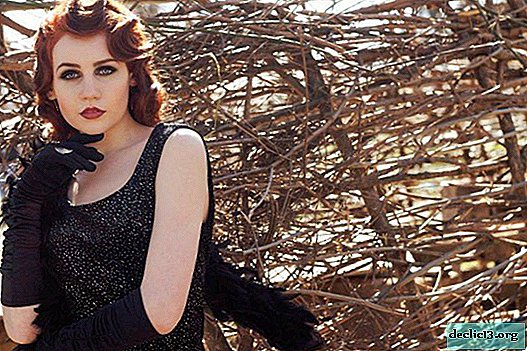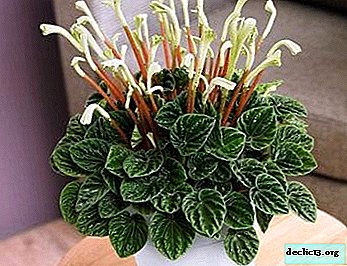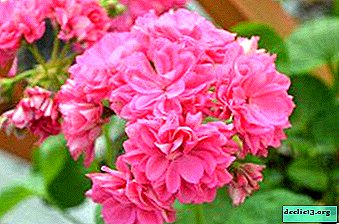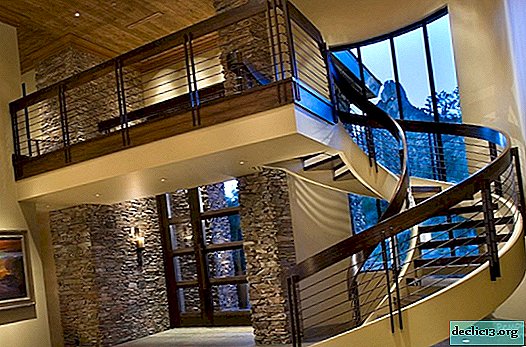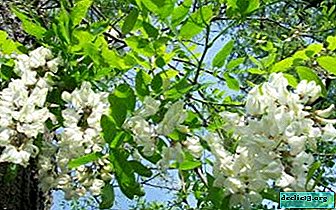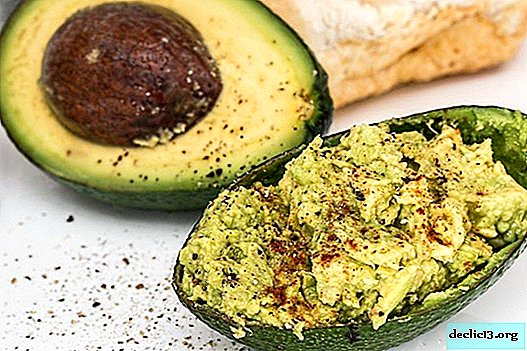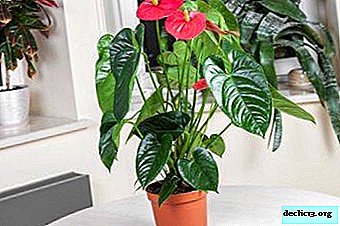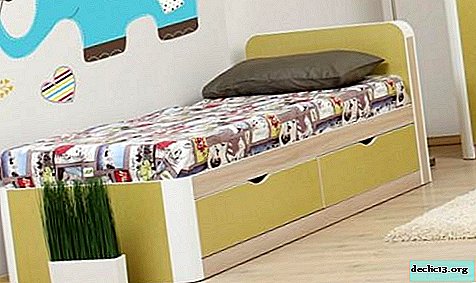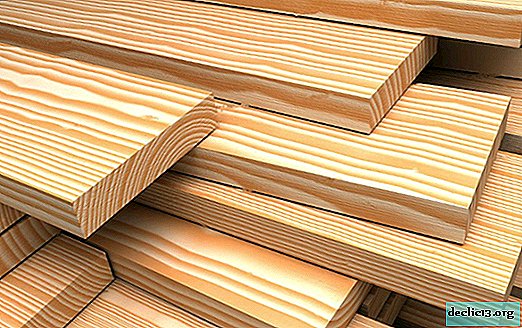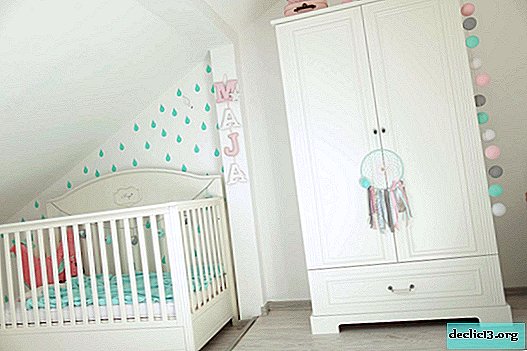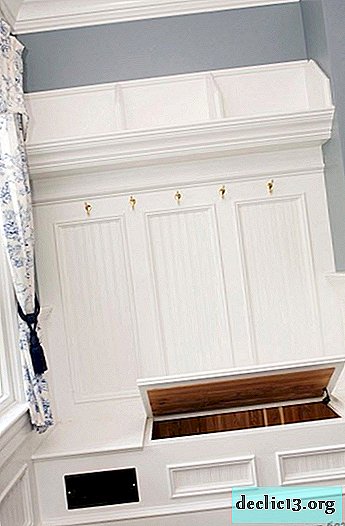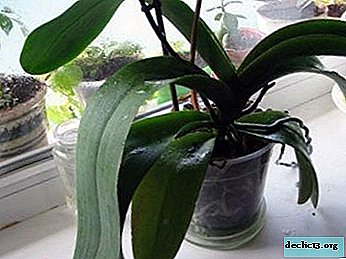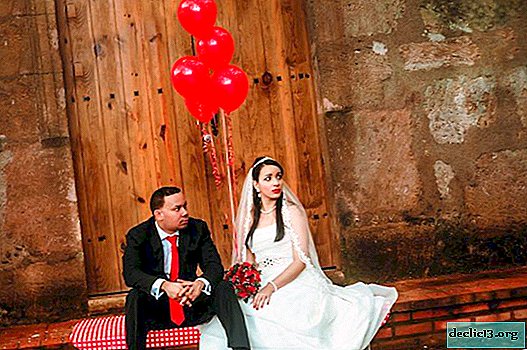What varieties is bush petunia? Photo and description, care features
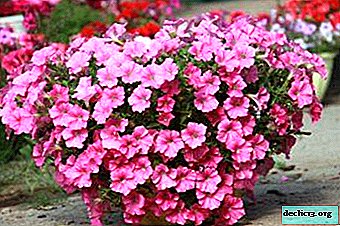
Bush petunia is an ornamental plant that is distinguished by its amazing and enchanting flowering.
No gardener can do without this flower when decorating a flower bed. In addition, you can plant a plant in a pot, flowerpot, hanging boxes.
Petunia pleases with multi-colored inflorescences from spring to late autumn. You will read the names of the varieties, see also how the varieties of this flower look in the photo.
Botanical Description and History
Bush petunia is the most common group of this decorative culture.. Comes from tropical regions of South America. It is characterized by a large number of varieties, their variety and colorfulness.
All bush petunias have large flowers, the diameter of which is 10-14 mm.Each inflorescence combines two flowers. They are characterized by smooth color transitions and borders. The peculiarity of the plant is the different shape of the edges of the flower.
Varieties: name, description and photo
Daddy
This variety is a large-flowered bush petunia. The culture is characterized by numerous large flowers. The height of the bush is 25 cm. Deaddy is resistant to wind, rain and drought. It responds positively to diffuse sunlight. You can use the variety for decorating flower beds and rabatka, balcony and garden. Color of flowers is:
- in red;
- hot pink;
- white
- in blue.

Picoti
Large flowers of the plant are full of various shades. Petals are characterized by a white borderthanks to which the flower takes on an elegant look.
The variety is resistant to rain, so it is great for outdoor cultivation.Bush height 25 cm. Flowering lasts throughout the summer and ends with the onset of frost. Picoti is suitable for growing in vases, crates, hanging baskets.

Storm
This variety is perfect for decorating a home, balcony or garden. Wind and rain are not terrible for a plant. The dimensions of the flower are large, and their shape is rounded.
The peculiarity of the variety is resistance to gray rot. Even if the whole summer is rainy and gray, the flower will still bloom and delight with its appearance.The height of the bush is 35 cm. For planting, choose nutritious soil. The color of the flower can be:
- in blue;
- lilac;
- pink;
- white
- in red.
Variety Storm has proven itself in the design of city parks and alleys.

Polaris
This is an annual bush petunia obtained from Aelita. The plant perfectly resists all the surprises of the weather. It differs in early and long flowering. Bush height 30 cm. You can use petunia to decorate the garden or balcony. It looks good in flower pots, hanging baskets, balconies and terraces.

Ultra
The height of the bush is 30-35 cm, and the width is 35-40 cm. The flowers in the variety are large, wide open, have a wavy edge.
The culture is strong, resistant to weather, grows well.Due to the good shape of the bush, Petunia Ultra is suitable for planting on large flower beds.

Dreamms
This is a hybrid large-flowered petunia. The dimensions of the plant are compact, characterized by good branching. The length of the stems is 25-40 cm, and the diameter of the flowers is 10-13 cm. They are very fragrant and red in color. Flowering is plentiful and long.
Since the variety is completely picky in terms of care, it can be used for various types of landscaping.You can plant petunia with such plants:
- marigold;
- pelargonium;
- lobilia;
- cineraria.

Fantasy
This is a vibrant multi-flowered mixture. The flowers have wavy edges that have amazing colors. Their peculiarity is that they do not lose their decorative effect for a long time. This variety is very attractive for its short growing period, long flowering and endurance. This allows the Fantasy to become an indispensable plant for decorating flower beds and rabatok.

Hit parade
The bush has compact dimensions, small leaves and beautiful flowers.which are characterized by early education.
The diameter of the inflorescences is 10 cm, the color can be from blue-violet to pale lilac. The height of the bushes is 25 cm.Applied grade for planting in pots, balcony boxes.

Titanium
The bush is erect, densely branched, compact. Its height is 25 cm and a diameter of 45 cm. The leaves are large, egg-shaped, blunt and light green in color. The diameter of the inflorescences is 10-12 cm. Their color is pink, and the edges are fringed. The tube in the throat is pink-beige, dark pink veins are visible.

Landing
Planting arrangements for bush petunias have certain features:
- Soil should be chosen not heavy. To loosen, use peat and sand. For landing, take a small container.
- Before planting, moisten the soil, scatter the seeds from above and do not dig them far, just simply crush them with earth.
- For irrigation use a container with a spray and clean, settled water.
- To speed up germination, cover the seedlings with foil. Open it every day for ventilation.
- Expect seedlings in 5-6 days. After that, the film can be opened more often and for a long time, so that the sprouts can get maximum light.
- With the formation of the first leaves, after 2 weeks you can make top dressing. Do this by spraying. Fertilize 1-2 times a week.
- When the number of flowers in the sprout has become large, then it is time to start transplanting into a container with great depth.
Soil requirements
 For bush petunia, it is necessary to choose sandy and clay soils. If you grow a flower on the balcony, then you will have to combine in equal proportions the leaf and sod land, peat and river coarse sand.
For bush petunia, it is necessary to choose sandy and clay soils. If you grow a flower on the balcony, then you will have to combine in equal proportions the leaf and sod land, peat and river coarse sand.
Petunias need a special soil composition. It should be loose, moisture permeable, light.
Lighting and location
 To plant a petunia, you need to choose a well-lit area. This plant is photophilous. In the shade, it releases a lot of leaves and few buds. If you grow petunia in an apartment, then choose windows facing the south or southwest.
To plant a petunia, you need to choose a well-lit area. This plant is photophilous. In the shade, it releases a lot of leaves and few buds. If you grow petunia in an apartment, then choose windows facing the south or southwest.
Petunias need a special soil composition. It should be loose, moisture permeable, light.
Care
Watering
Still fragile seedlings of petunias should be watered neatly using used water. Pouring it under the very spine.Drip irrigation, for which a regular syringe is used, is best suited.
 Soil under and near plants that have matured, moisten 2 times a week. Shrub petunia is drought tolerantso water it when the earthen coma dries up. But at the same time, water access to the roots should be regular. Otherwise, the leaves begin to turn yellow, and the stems are exposed. Watering is best done in the evening to prevent the development of burns on the leaves.
Soil under and near plants that have matured, moisten 2 times a week. Shrub petunia is drought tolerantso water it when the earthen coma dries up. But at the same time, water access to the roots should be regular. Otherwise, the leaves begin to turn yellow, and the stems are exposed. Watering is best done in the evening to prevent the development of burns on the leaves.
Fertilizer
 In order for petunia to grow strong and healthy, it should be periodically fed. The first nitrogen fertilizer to be applied after 15-20 days, the field of formation of the first sprouts. This will allow the future plant to increase the required amount of green mass. After the appearance of the buds, it is worth using mineral fertilizers containing potassium and phosphorus in high concentrations. It is enough to make them 2 times a month.
In order for petunia to grow strong and healthy, it should be periodically fed. The first nitrogen fertilizer to be applied after 15-20 days, the field of formation of the first sprouts. This will allow the future plant to increase the required amount of green mass. After the appearance of the buds, it is worth using mineral fertilizers containing potassium and phosphorus in high concentrations. It is enough to make them 2 times a month.
Watch a video about fertilizing petunias.
Pinch
 The formation of the appearance of an adult bush begins at the seedling stage. For this, the pinching method is used. This will allow us to determine the degree of branching of the bush and the number of future buds.
The formation of the appearance of an adult bush begins at the seedling stage. For this, the pinching method is used. This will allow us to determine the degree of branching of the bush and the number of future buds.
Pinching makes the bush more branched. Carry out such events 2-3 times. Nipping is performed on the 4-5th leaflets of the central shoot. Due to this, new sprouts awaken in the axils of the leaves, which are located below.
Proper pinching of the petunia for the bushiness of the bush.
Diseases and Pests
Among the most common diseases are:
 Blackleg. The stem is affected, as a result of which it becomes black and soft. It manifests itself as follows: at the base of the stem, a dark area forms, which softens and begins to rot. Mostly young seedlings suffer from the black leg. The disease is caused by soil fungi. There is no cure for the disease, so the affected plant will have to be thrown away.
Blackleg. The stem is affected, as a result of which it becomes black and soft. It manifests itself as follows: at the base of the stem, a dark area forms, which softens and begins to rot. Mostly young seedlings suffer from the black leg. The disease is caused by soil fungi. There is no cure for the disease, so the affected plant will have to be thrown away.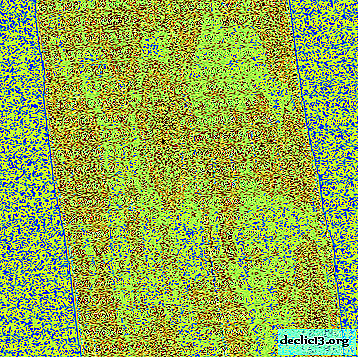 Brown spotting. It occurs due to high humidity. It is characterized by the presence of brown spotting on the leaves of the plant. The causative agent of this disease is also a fungus, which manifests itself as a result of high humidity or due to mechanical damage to the plant. For treatment, copper-based preparations are used. Perform processing 2-3 times after 7 days.
Brown spotting. It occurs due to high humidity. It is characterized by the presence of brown spotting on the leaves of the plant. The causative agent of this disease is also a fungus, which manifests itself as a result of high humidity or due to mechanical damage to the plant. For treatment, copper-based preparations are used. Perform processing 2-3 times after 7 days.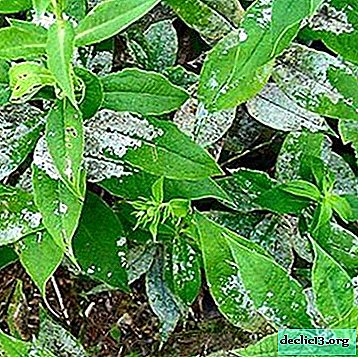 Powdery mildew. Powdery mildew is a rapidly spreading fungal disease of plants. It occurs when the air temperature changes, excess moisture. Leaves and stems are covered with white coating. Even with perfect care of the flower beds, the risk of plant damage by powdery mildew cannot be completely ruled out. For treatment, use Fundazole and Topaz.
Powdery mildew. Powdery mildew is a rapidly spreading fungal disease of plants. It occurs when the air temperature changes, excess moisture. Leaves and stems are covered with white coating. Even with perfect care of the flower beds, the risk of plant damage by powdery mildew cannot be completely ruled out. For treatment, use Fundazole and Topaz.
Such pests affect bush petunia:
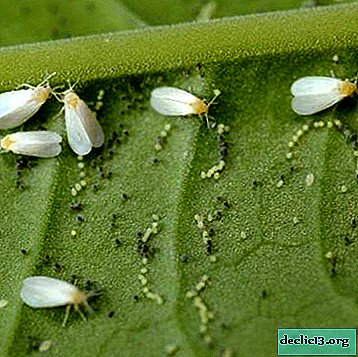 Whitefly. When a plant is affected by a whitefly, the flowers turn yellow and wilt. The length of the whitefly is 1.5-3 mm, the body and wings are white, covered with powdery pollen. Adult whitefly feeds on the sap of plants and causes them great harm. To combat this pest, you need to use Confidor and Actelit.
Whitefly. When a plant is affected by a whitefly, the flowers turn yellow and wilt. The length of the whitefly is 1.5-3 mm, the body and wings are white, covered with powdery pollen. Adult whitefly feeds on the sap of plants and causes them great harm. To combat this pest, you need to use Confidor and Actelit. Aphid. Aphids on petunia leaves are not uncommon. Aphids can be seen with the naked eye. These insects cover the plant stem in a dense layer. As a result of their impact, the stem and leaves wither, twist and die. There are various ways to deal with aphids. To fight aphids in petunias, you need to use drugs such as Decis and Confidor.
Aphid. Aphids on petunia leaves are not uncommon. Aphids can be seen with the naked eye. These insects cover the plant stem in a dense layer. As a result of their impact, the stem and leaves wither, twist and die. There are various ways to deal with aphids. To fight aphids in petunias, you need to use drugs such as Decis and Confidor.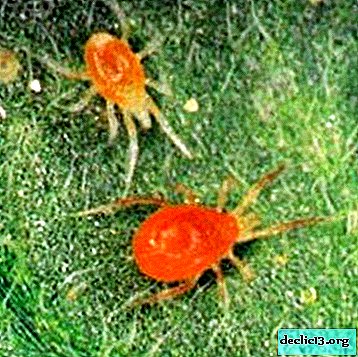 Spider mites.The most common pest that appears on petunias at home is a spider mite. A colony of ticks can quickly move from one plant to another, destroying the plant. When they are affected, a general inhibition of the plant is traced. A thin web is formed near the flower and on it. For treatment in the fight against spider mites, the following drugs are used: Demitan, Appolo, Neoron.
Spider mites.The most common pest that appears on petunias at home is a spider mite. A colony of ticks can quickly move from one plant to another, destroying the plant. When they are affected, a general inhibition of the plant is traced. A thin web is formed near the flower and on it. For treatment in the fight against spider mites, the following drugs are used: Demitan, Appolo, Neoron.
Breeding
In addition to propagation by seeds, there is a more reliable and simple way - cuttings.
The breeding process has its own characteristics.:
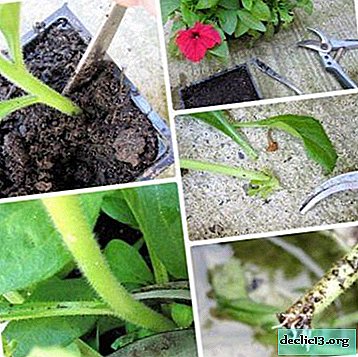 Harvesting of the cuttings takes place from February to May.
Harvesting of the cuttings takes place from February to May.- It is possible to carry out cuttings throughout the year.
- Cut planting material from the tops of the shoots. On the cut stalk, leave 4-6 leaves, of which only 2 top leaves are left, while half cut.
- Process the cut part of the handle with a solution that stimulates the growth of the root system. Place it in soil, which is similar in composition to the soil mixtures used for sowing seeds. Deepen the stalk by ¼ length.
- Between the seedlings, a gap of 15-20 cm should be observed.
- After planting, sprinkle the stalk with soil or perlite. The layer thickness is 20-25 mm, and then treated with an antifungal drug.
- Cover the box with seedlings with foil, take it out into a well-lit room. There should be a temperature of 21-24 degrees heat.
Propagation and cultivation of petunias by cuttings.
Possible problems
When growing bush petunias, the following problems are possible:
- Stretching shoots, a small number of colors. This occurs in low light and low air temperatures. So it’s best to grow a flower in a sunny place.
- Light bloom. Immediately after the flower has faded, it must be removed. Otherwise, the plant starts to spend a lot of energy on the ripening of the fruit.
- Fungal disease. The main reason for their development is the use of fresh humus for feeding.
Bush petunia is a real find for lovers of bright and colorful flowers. When planting it, it will bloom and decorate the flowerbed throughout the summer and until the frosts. And it will require full care and care.

 Blackleg. The stem is affected, as a result of which it becomes black and soft. It manifests itself as follows: at the base of the stem, a dark area forms, which softens and begins to rot. Mostly young seedlings suffer from the black leg. The disease is caused by soil fungi. There is no cure for the disease, so the affected plant will have to be thrown away.
Blackleg. The stem is affected, as a result of which it becomes black and soft. It manifests itself as follows: at the base of the stem, a dark area forms, which softens and begins to rot. Mostly young seedlings suffer from the black leg. The disease is caused by soil fungi. There is no cure for the disease, so the affected plant will have to be thrown away. Brown spotting. It occurs due to high humidity. It is characterized by the presence of brown spotting on the leaves of the plant. The causative agent of this disease is also a fungus, which manifests itself as a result of high humidity or due to mechanical damage to the plant. For treatment, copper-based preparations are used. Perform processing 2-3 times after 7 days.
Brown spotting. It occurs due to high humidity. It is characterized by the presence of brown spotting on the leaves of the plant. The causative agent of this disease is also a fungus, which manifests itself as a result of high humidity or due to mechanical damage to the plant. For treatment, copper-based preparations are used. Perform processing 2-3 times after 7 days. Powdery mildew. Powdery mildew is a rapidly spreading fungal disease of plants. It occurs when the air temperature changes, excess moisture. Leaves and stems are covered with white coating. Even with perfect care of the flower beds, the risk of plant damage by powdery mildew cannot be completely ruled out. For treatment, use Fundazole and Topaz.
Powdery mildew. Powdery mildew is a rapidly spreading fungal disease of plants. It occurs when the air temperature changes, excess moisture. Leaves and stems are covered with white coating. Even with perfect care of the flower beds, the risk of plant damage by powdery mildew cannot be completely ruled out. For treatment, use Fundazole and Topaz. Whitefly. When a plant is affected by a whitefly, the flowers turn yellow and wilt. The length of the whitefly is 1.5-3 mm, the body and wings are white, covered with powdery pollen. Adult whitefly feeds on the sap of plants and causes them great harm. To combat this pest, you need to use Confidor and Actelit.
Whitefly. When a plant is affected by a whitefly, the flowers turn yellow and wilt. The length of the whitefly is 1.5-3 mm, the body and wings are white, covered with powdery pollen. Adult whitefly feeds on the sap of plants and causes them great harm. To combat this pest, you need to use Confidor and Actelit. Aphid. Aphids on petunia leaves are not uncommon. Aphids can be seen with the naked eye. These insects cover the plant stem in a dense layer. As a result of their impact, the stem and leaves wither, twist and die. There are various ways to deal with aphids. To fight aphids in petunias, you need to use drugs such as Decis and Confidor.
Aphid. Aphids on petunia leaves are not uncommon. Aphids can be seen with the naked eye. These insects cover the plant stem in a dense layer. As a result of their impact, the stem and leaves wither, twist and die. There are various ways to deal with aphids. To fight aphids in petunias, you need to use drugs such as Decis and Confidor. Spider mites.The most common pest that appears on petunias at home is a spider mite. A colony of ticks can quickly move from one plant to another, destroying the plant. When they are affected, a general inhibition of the plant is traced. A thin web is formed near the flower and on it. For treatment in the fight against spider mites, the following drugs are used: Demitan, Appolo, Neoron.
Spider mites.The most common pest that appears on petunias at home is a spider mite. A colony of ticks can quickly move from one plant to another, destroying the plant. When they are affected, a general inhibition of the plant is traced. A thin web is formed near the flower and on it. For treatment in the fight against spider mites, the following drugs are used: Demitan, Appolo, Neoron. Harvesting of the cuttings takes place from February to May.
Harvesting of the cuttings takes place from February to May.